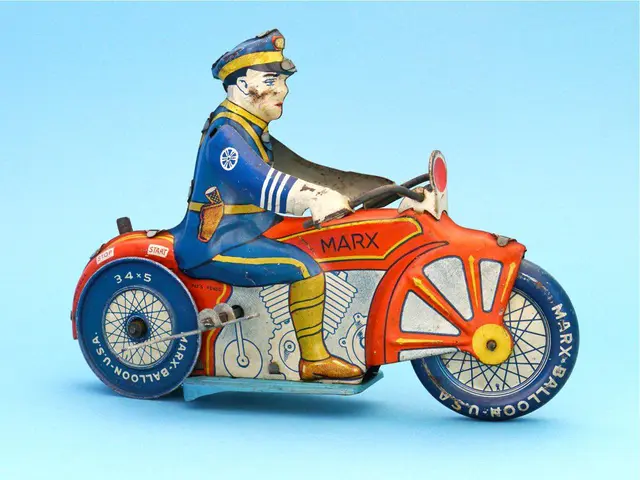Shopping Second-Hand: Join Me in My Thrift Store Adventures!
In the world of fashion, a blogger is making waves by sharing their passion for thrifted clothing. Approximately 90% of their wardrobe consists of second-hand finds, and they're eager to spread the word about the joys and benefits of thrift shopping.
Thrift shopping offers a multitude of options, far surpassing the limited choices presented by the fast fashion industry. Whether you're after vintage or youthful styles, there's a thrift spot for everyone. And with online platforms like ThredUp, Worn Wear.Patagonia, ShopGoodwill.com, Poshmark, and Swap, you can explore a wide range of options from the comfort of your home.
The blogger recently shared a video breakdown of their latest thrift shopping experience, revealing their personal methods for finding unique and affordable pieces. They encourage their audience to join them on this journey, offering insights into clutter-free spaces, motivation, techniques, and ideas.
But thrift shopping isn't just about finding bargains. It's about making a difference. By choosing to buy second-hand items, even if they were originally from unsustainable stores, we're helping to reduce textile waste and promote a more sustainable fashion industry.
Effective thrift shopping requires a bit of planning. Start by taking inventory of your wardrobe or home to identify gaps and create a focused wishlist. Use measurement tools to know your exact size dimensions, as sizing varies greatly between brands, especially with secondhand items. When shopping online, use filters (such as size, brand, and price) and save searches or favorite items to monitor restocks or price drops. Asking sellers for item measurements when not listed is also helpful.
Both online and in-store strategies can be beneficial. Online thrifting benefits from saved searches, wishlist creation, and seller communication for measurements. In-store thrifting can be aided by familiarizing yourself with store acronyms (e.g., NWT = new with tags) and being patient to find unique pieces like furniture or vintage items that add character at lower cost.
The sustainability benefits of thrift shopping are significant. Thrift stores reduce textile waste by diverting clothing from landfills, though only a portion of donated items are sold. Effective sorting, inventory tracking with tech tools, and integrating online sales help increase sold items, thus reducing waste. Beyond environmental impact, thrift stores support local economies, create jobs, and provide more affordable shopping options.
In summary, thrifting effectively involves intentional, informed shopping with both online and offline tools, while supporting sustainability by extending the life of clothing and reducing textile waste. It also helps you save money and find unique items with a lower environmental footprint. So why not give it a try? You might just find your new favourite outfit at a fraction of its original cost.
- Thrift shopping offers a variety of styles, ranging from vintage to youthful, making it a better choice than the limited options presented by fast fashion.
- Aside from saving money, thrift shopping plays a part in reducing textile waste and promoting a more sustainable fashion industry.
- To get the most out of thrift shopping, it's important to plan, such as taking inventory of your wardrobe, using measurement tools, and filtering items online.
- Thrift stores not only help the environment by reducing textile waste, but also support local economies, create jobs, and offer affordable shopping options.




